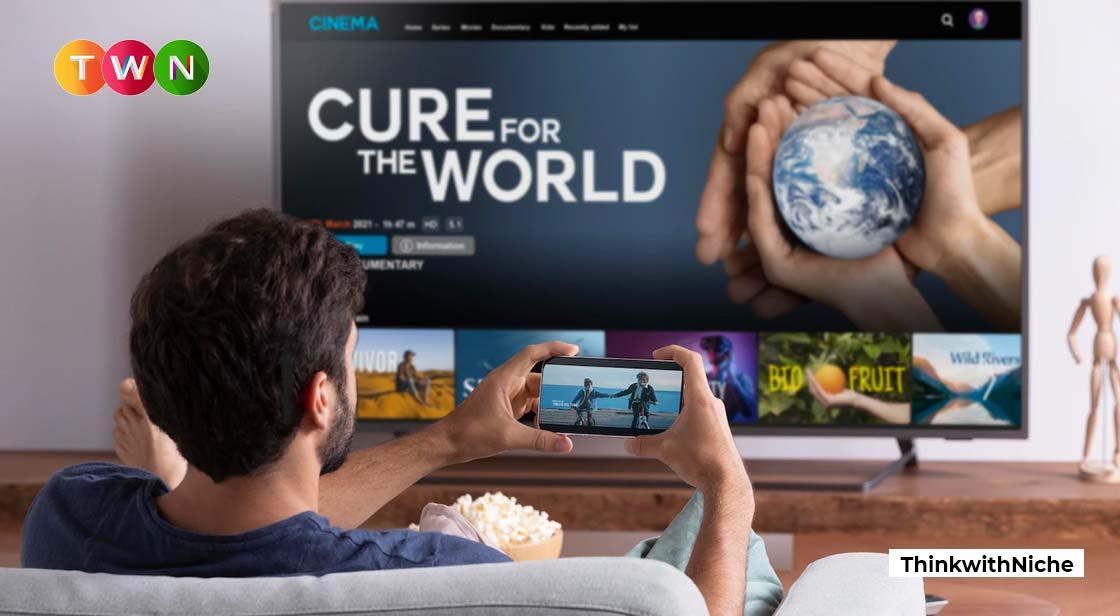OTT? – Understanding the Modern Media Streaming Landscape

Blog Post
OTT companies such as Netflix and Amazon Prime have started producing original material that is only available through their services in recent years. Exclusive streaming licenses for previously televised programs are also available on platforms like HBO Max and Disney+. For many years, watching cable television necessitated the use of a television. We can now watch OTT material on a variety of devices. From a game console, smartphone, tablet, or smart TV, any account holder may enjoy the same OTT experience. #ThinkWithNiche
An "over-the-top" media service is an internet content provider that offers streaming media as a stand-alone product. The phrase is most commonly used to describe video-on-demand platforms, but it can also be used to describe audio streaming, messaging services, or internet-based voice calling solutions. Traditional media distribution channels such as telecommunications networks and cable television providers are bypassed by OTT services. You can use the entire service whenever you want as long as you have an internet connection – either locally or through a mobile network. Paid subscriptions are the most common method for OTT services to be monetized. However, there are exceptions. Certain OTT platforms, for example, can offer in-app purchases or advertisements.
How is OTT content delivered?
OTT platforms avoid third-party networks that are used to handle online content because of their internet-based distribution mechanism. Customers only need an internet connection and a compatible hardware device to use the service. Smartphones and tablets: can download OTT apps from a digital marketplace that is supported. Personal computers: OTT content may be viewed on most computers via desktop programs or web browsers. Smart TVs: Many new TV models come with OTT apps pre-installed or allow users to download them. Third-party devices, such as the Apple TV: can enable a variety of OTT options. Many current video game consoles can download and run OTT apps as well.
What kind of material is appropriate for OTT?
While most people associate OTT with video-on-demand, the technology truly encompasses a wide spectrum of web-based content:
- Video: The most well-known form of OTT media services is video streaming. Subscription services like Netflix paid stores like iTunes, and ad-supported services like YouTube are all popular platforms.
- Audio: OTT solutions can also be used to stream audio. Internet radio stations and podcasts are two popular examples. Instant messaging: Over-the-top (OTT) instant messaging services link users directly over the internet, circumventing mobile SMS networks. These services are available from Facebook, Google, Skype, WeChat, and a slew of other companies. Most can replace or integrate with text messaging functions on smartphones.
- VOIP: OTT services include voice calling systems like Skype and WeChat that use internet technologies to communicate. These services can sometimes combine with mobile phone networks to improve specific functionality.
What are the opportunities?
The potential behind OTT technology is tremendous! Video streaming services are becoming more popular around the world, with North America leading the charge with a 51 percent adoption rate. As companies such as Netflix expand abroad, Europe and Asia-Pacific are seeing significant growth. Aside from worldwide adoption rates, non-entertainment fields have great potential. According to a recent poll, 50% of OTT subscribers pay for educational content, which is frequently supplied via instructional streaming services. Streams devoted to children's programs or health-related information could be particularly promising. Tiered monetization should also be considered by OTT platforms. While the majority of solutions are subscription-based, members can also purchase in-app items. Casting a wide net when it comes to monetization options could aid the growth of OTT solutions in the coming years. Performance marketing has shown to be a particularly effective technique of recruiting subscribers to OTT platforms in a scalable and predictable manner for advertisers.
Conclusion
Over-the-top media services have been around for a while, but there is still plenty of room for them to expand. Increased diversification and competitiveness show that the market is healthy and growing, with plenty of untapped potentials. OTT, whether you're following up-and-coming platforms or binge-watching the latest Netflix Original series, unquestionably represents the future of media. It's an exciting time to be a part of it.
You May Like
EDITOR’S CHOICE












